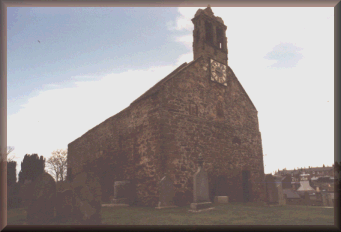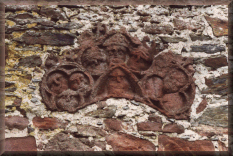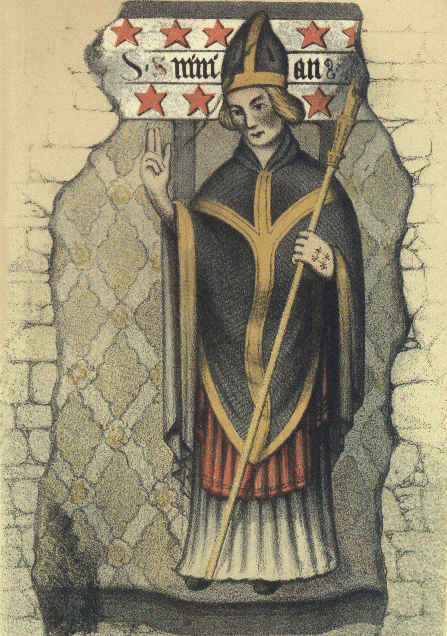


![]()

The Book of Deer incidentally makes us acquainted for the first time with another of our early Celtic monasteries. In the grant by Gartnaid the mormaor, and Ete his wife (AD1132) we find amongst the witnesses, "Domongart ferleginn Turbruad", or ferleginn of Turriff; and that of Colban the mormaor, and Eva his wife, dated somewhat later, is witnessed by "Cormac abb. Turbruad", or Abbott of Turriff.
The monastery of Turriff is associated with St Congan who flourished at the beginning of the eighth century. It does not appear whether the monastery was founded by Congan himself or simply dedicated to him. The site of the monastery is a commanding one and suggestive of its occupation by the early Pictish tribes as a rath. The church was placed on the summit of a lofty bank.

Remains of medieval church of Turriff
Turriff should be regarded not only as a college of ecclesiastics, but also as one of the schools of the day; and it is a matter of great interest that it contained an officer {fer leginn} so prominent in the sister establishments of Ireland.

Remnant of earlier Celtic monastery set into east wall of medieval church.
The later church was granted before 1214 by Marjory, Countess of Buchan, to the monks of Arbroath. In the year 1273, her son William Cumyn, Earl of Buchan, founded at Turriff an almshouse for a master, six chaplains, and thirteen poor husbandmen of Buchan, by a charter dated at his house of Kelly, and witnessed, amongst others, by King Alexander III. The grant of the church to the Abbey of Arbroath seems to have been revoked since it is included in the list of gifts granted by her son to the hospital founded by him in honour of St Congan.
In the year 1412, the church of Turriff was erected into a prebend of the cathedral of St Mary and St Machar at Aberdeen.
In December 1861 portions of the choir were taken away, and on removing the stones from a window in the south wall, which had been built up, there appeared on the splay of one of the sides a human figure painted on the plaster in bright colours. {Another painting was found on the other splay but was unfortunately never recorded.} The image below shows the painting (from sketches made by Mr Gibb at the time of the discovery) before it was broken up and destroyed!! It shows a figure of a bishop fully habited in Roman custom - the right hand is raised in benediction, and the left hand holds a crozier. Above, in gothic lettering, reads ST NINIANUS. There can be little doubt that the style of art used was that of a fresco. So complete has been the destruction in our ancient churches in Alba that this figure of St Ninian is the only example of fresco work which we can speak of with any certainty.

St Ninian
Notes.
1. The fer leginn or man of learning, was a prominent officer in the monasteries of Ireland, and he doubtless occupied a like position in the kindred institutions of Alba.
2. The rath was the abode of a tribal chief or minor king. It was often built of wood on the top of a hill and surrounded by the huts of the other members of the clan.

e-mail: admin@cushnieent.force9.co.uk
© 2005 Cushnie Enterprises